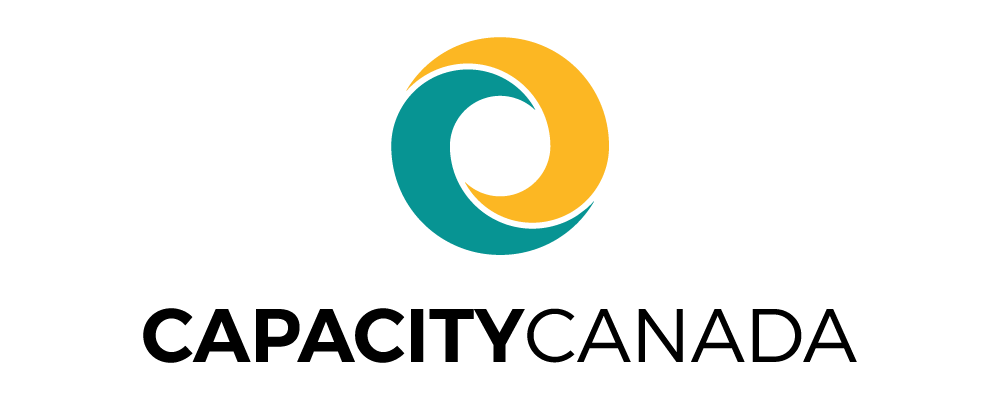
If they arrived not knowing what to expect, they left with plenty of food for thought.
Twenty-five young men and women, the second cohort of the MaRS Studio Y program in Toronto, visited Waterloo Region Oct. 8 as guests of Capacity Canada.
Drawn from backgrounds as wide-ranging as mathematics, film-making, music, commerce and physics, they have at least two things in common: a passion for inquiry, and a heartfelt commitment to improving the lives others.
Ellen Flanagan of Perth, Ont., emerged from a tour of the Felt Lab in St. Jacobs wondering what new technology — large touch screens and motion-capture displays — will do for people living with mental and physical challenges. She is an occupational therapist by training, with her social radar tuned to how organizations and events include all members of the community.
“It was really interesting to see all the fun stuff (in the Felt Lab) and questioning . . . how can we draw in people who have different abilities,” Flanagan said.
“Technology can be a huge door opener for people of different abilities, or it can be an entire block.’’
Idea factory
Studio Y participants are called “Fellows.” They spend eight months, full-time, with the program in Toronto. It is an incubator of ideas for social change rather than products, and it encourages creative people outside engineering and computer science to take part in the development of new technology.
Split into teams, the Fellows adopt projects from the community. One team in the first cohort helped produce tactile, three-dimensional maps of buildings, a useful tool in designing space without barriers.
Studio Y focuses on “inner development,” building up the collaborative and leadership strengths of the Fellows, says Violetta Ilkiw, who works with the program. Ilkiw recently joined Capacity Canada’s roster of executives-in-residence.
The visit Oct. 8 began at the Tannery Event Centre, a gateway to the Communitech Hub, where more than 100 technology startups find space and support. The location was no accident: Communitech’s ASCEnt program helps social entrepreneurs.
There shouldn’t be any difference in social consciousness between for-profit companies and non-profit agencies, Cathy Brothers said as she welcomed the Fellows.
“We need to work together to break down those artificial distinctions that make some people feel they are more responsible for the world than others,” said Brothers, Capacity Canada’s executive director in residence. “We are all responsible.”
The group then toured Communitech, with stops at the Velocity Garage and the Canadian Digital Media Network.
Wisdom of others
At lunch, Brothers introduced the group to David Beaton, the first of more than a dozen entrepreneurs and community leaders who, through the day, shared lessons learned from their own experience as innovators. Beaton is a founder of ChangeIt a local company that allows people to round up purchases made with bank cards, and divide the difference across their favourite charities.
“You have to have the ability to ask for help,” Beaton said. “Asking for help is a strength, not a weakness. It’s one of the reasons you’ll be successful.”
Lunch-hour speakers also included Jennifer King and Ben Jackson of Social Venture Partners Waterloo Region and Social Venture Partners Waterloo Region Teens; Joe Mancini of The Working Centre and Zainab Ramahi, a board member with Muslim Social Services.
During a speed-meeting event — five minutes per meeting — the Studio Y Fellows swapped business cards with Kate MacDuff of the Food Assistance Network; Lloyd Hipel of Enviro-Stewards Inc.; Deborah Currie of the Creative Enterprise Initiative; Darin White of makebright; Tania Del Matto of GreenHouse at St. Paul’s University College, Waterloo; and Glenn Smith of ASCent.
In St. Jacobs, the Fellows toured Quarry Integrated Communications and the adjacent Felt Lab. They batted questions at Quarry president and chief operating officer Ken Whyte, and chairman Alan Quarry.
How does the business stay current? Any advice about getting into marketing? What about risk?
“The riskiest thing I could do was be safe, to take no chances,” Quarry said. “If you don’t keep moving, you’ll be run over.”
Lessons of Milo
The group met one last entrepreneur at dinner at the Stone Crock Restaurant. Marcus Shantz of Mercedes Corp. talked about his father, Milo Shantz (1932-2009), and the role Milo played in the present-day success of St. Jacobs.
Forty years ago, St. Jacobs was in danger of becoming a “hollowed-out” community, with shuttered stores and a shrinking manufacturing sector. Milo Shantz and Mercedes Corp. shifted it to a destination town.
And the story is still unfolding. A complex of stores that once welcomed busloads of visitors when the Canadian dollar sat at around 65 cents now serves as the Quarry headquarters. Office workers share the sidewalks with tourists.
“We have to innovate,” Marcus said.
Thinking back on the day, Kacper Niburski, a Studio Y Fellow who wants to combine his background in science (chemical biology) with his passion for writing, said he was particularly interested in The Working Centre model: plenty of social enterprises, little administrative hierarchy, lots of good work accomplished.
When Niburski got on the bus that morning, the trip to Kitchener was clouded in mystery.
“I expected nothing,” he said, “and I was wonderfully surprised.”

